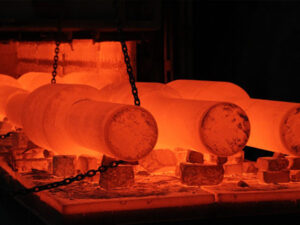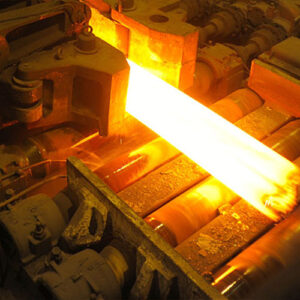Pendahuluan
Baja perkakas kerja panas is a class of high-performance materials known for their exceptional heat resistance, toughness, and wear resistance. These alloys play a vital role in various industrial applications, including die casting, forging, and extrusion. To ensure the longevity and optimal performance of hot work tool steel, proper maintenance practices are essential. In this comprehensive guide, we will explore the best practices for maintaining hot work tool steel. From storage and handling guidelines to regular maintenance routines, this article provides invaluable insights for engineers, metallurgists, and professionals working with hot work tool steel.
Pemahaman Baja Perkakas Kerja Panas<a name=”understanding-hot-work-tool-steel”
Hot work tool steel alloys are known for their exceptional heat resistance, toughness, and wear resistance. They are widely used in applications involving high temperatures and mechanical stress.
Storage: Protecting Against Corrosion<a name=”storage-protecting-against-corrosion”
Proper Storage Conditions<a name=”proper-storage-conditions”
Storing baja perkakas kerja panas in a clean, dry environment with controlled temperature and humidity is crucial to prevent corrosion and maintain its properties.
**Preventing Surface Contamination<a name=”preventing-surface-contamination”
Avoiding contact with contaminants like oils, greases, or acids during storage is essential to prevent surface contamination that can lead to corrosion.
Handling: Minimizing Mechanical Stress<a name=”handling-minimizing-mechanical-stress”
**Guidelines for Safe Handling<a name=”guidelines-for-safe-handling”
Proper handling practices, including using suitable lifting equipment and following safety protocols, reduce the risk of mechanical damage to hot work tool steel.
**Avoiding Impact and Overloading<a name=”avoiding-impact-and-overloading”
Impact and overloading can cause microstructural damage and reduce the material’s toughness. Handling with care and using appropriate load-bearing methods is crucial.
Regular Maintenance: Ensuring Peak Performance<a name=”regular-maintenance-ensuring-peak-performance”
**Cleaning and Inspection<a name=”cleaning-and-inspection”
Regular cleaning and visual inspection help identify surface issues, such as corrosion or contamination, early on.
**Lubrication and Corrosion Prevention<a name=”lubrication-and-corrosion-prevention”
Applying suitable lubricants and corrosion inhibitors during maintenance helps protect hot work tool steel from wear and corrosion.
Heat Treatment: When and How<a name=”heat-treatment-when-and-how”
**Annealing for Stress Relief<a name="”annealing-for-stress-relief”"></a>
Annealing is a heat treatment process used to relieve internal stresses in hot work tool steel, enhancing its dimensional stability.
**Tempering for Improved Toughness<a name=”tempering-for-improved-toughness”
Tempering hot work tool steel at specific temperatures improves its toughness and durability, making it suitable for demanding applications.
Quality Control: Inspecting for Integrity<a name=”quality-control-inspecting-for-integrity”
**Non-Destructive Testing<a name=”non-destructive-testing”
Non-destructive testing methods, including ultrasonic testing and magnetic particle inspection, ensure the integrity of hot work tool steel without damaging the material.
Challenges in Maintenance<a name=”challenges-in-maintenance”
Challenges in maintaining hot work tool steel include preventing surface contamination, managing heat treatment processes, and ensuring proper handling and storage.
FAQ<a name=”faq”
1. Can hot work tool steel be stored outdoors?
Storing hot work tool steel outdoors is not recommended. Exposure to the elements can lead to corrosion and other forms of degradation.
2. What is the frequency of maintenance required for hot work tool steel?
The frequency of maintenance depends on factors like usage, environmental conditions, and storage practices. Regular inspection and cleaning are essential.
3. Can hot work tool steel be re-tempered if its properties degrade over time?
Yes, hot work tool steel can be re-tempered to restore its properties if needed.
4. What are the signs of corrosion in hot work tool steel?
Signs of corrosion may include discoloration, pitting, or the formation of rust-like deposits on the surface of the steel.
5. Is it necessary to heat-treat hot work tool steel after welding or machining?
Heat treatment after welding or machining may be necessary to relieve stresses and restore the steel’s properties. The specific treatment depends on the application and requirements.
Conclusion<a name=”conclusion”
Proper maintenance practices are essential for maximizing the performance and lifespan of hot work tool steel. From storage and handling to regular cleaning and heat treatment, following best practices ensures that this high-performance material continues to excel in challenging industrial applications. With a solid understanding of maintenance requirements and careful adherence to guidelines, professionals can harness the full potential of hot work tool steel in their engineering and manufacturing endeavors while mitigating the challenges associated with its maintenance.

